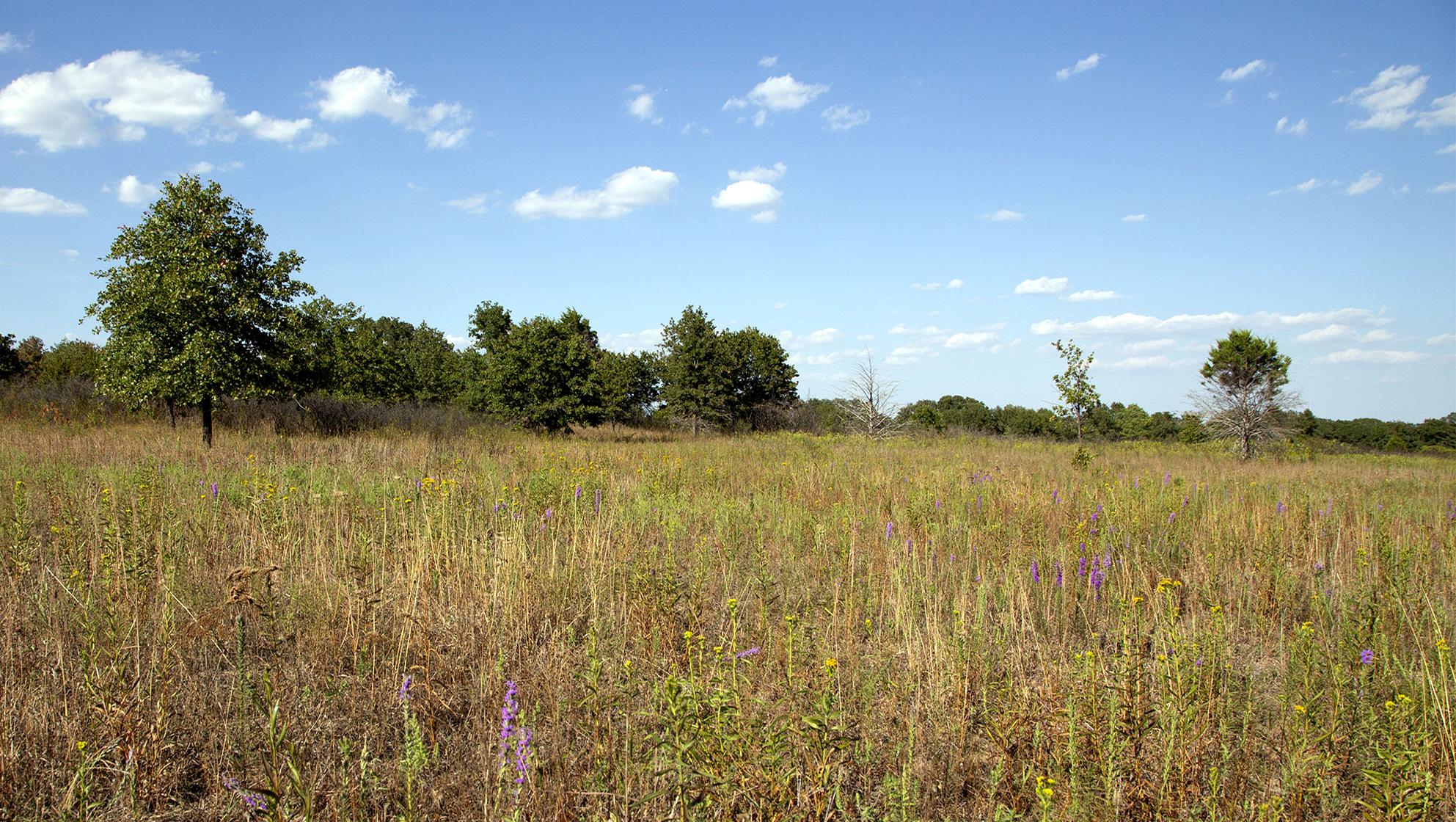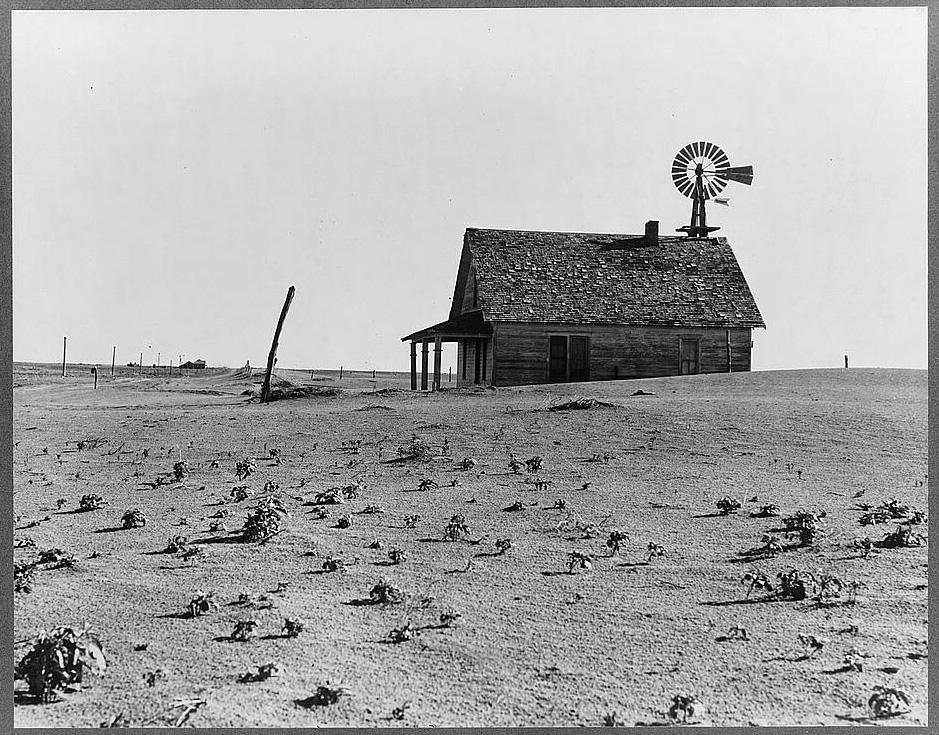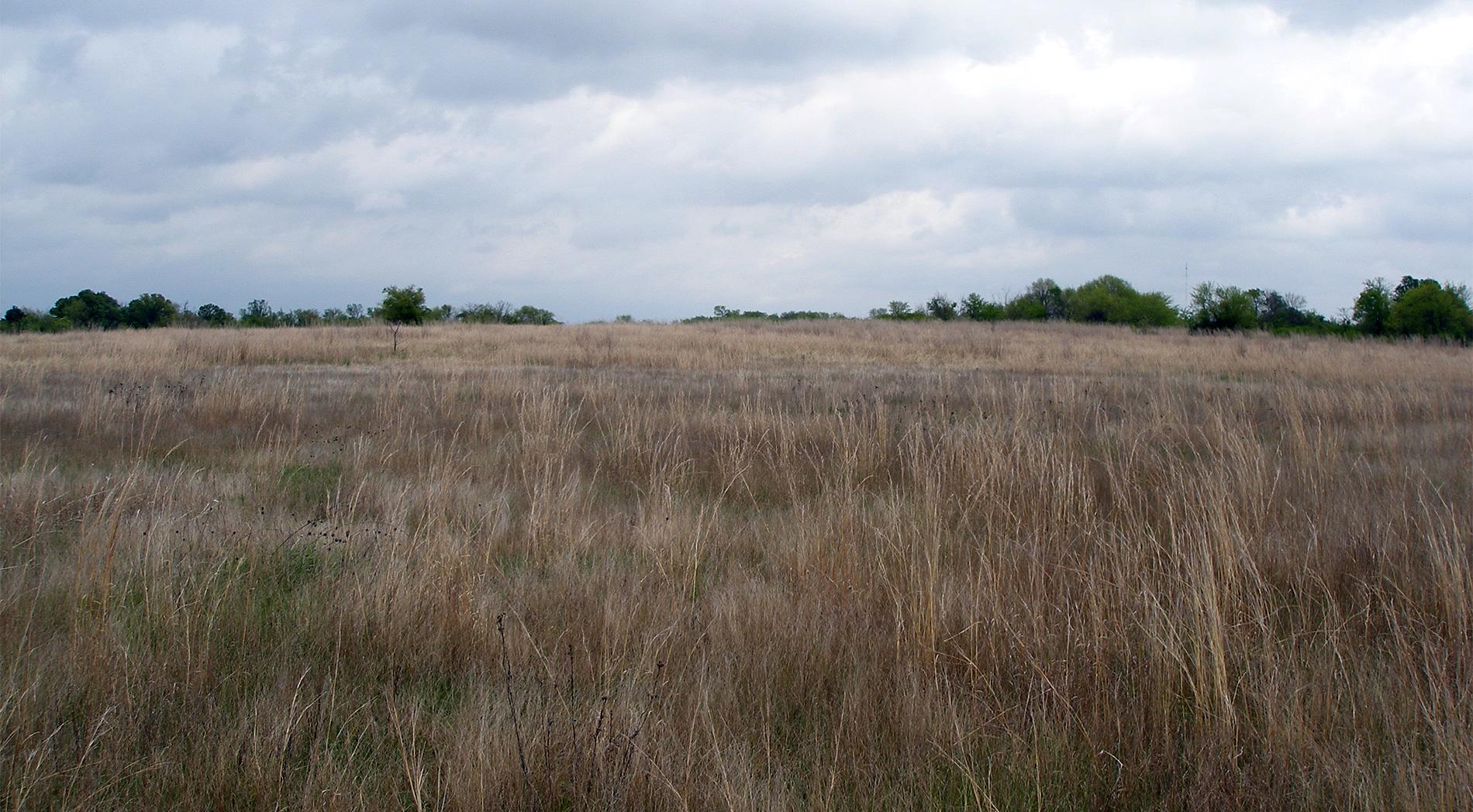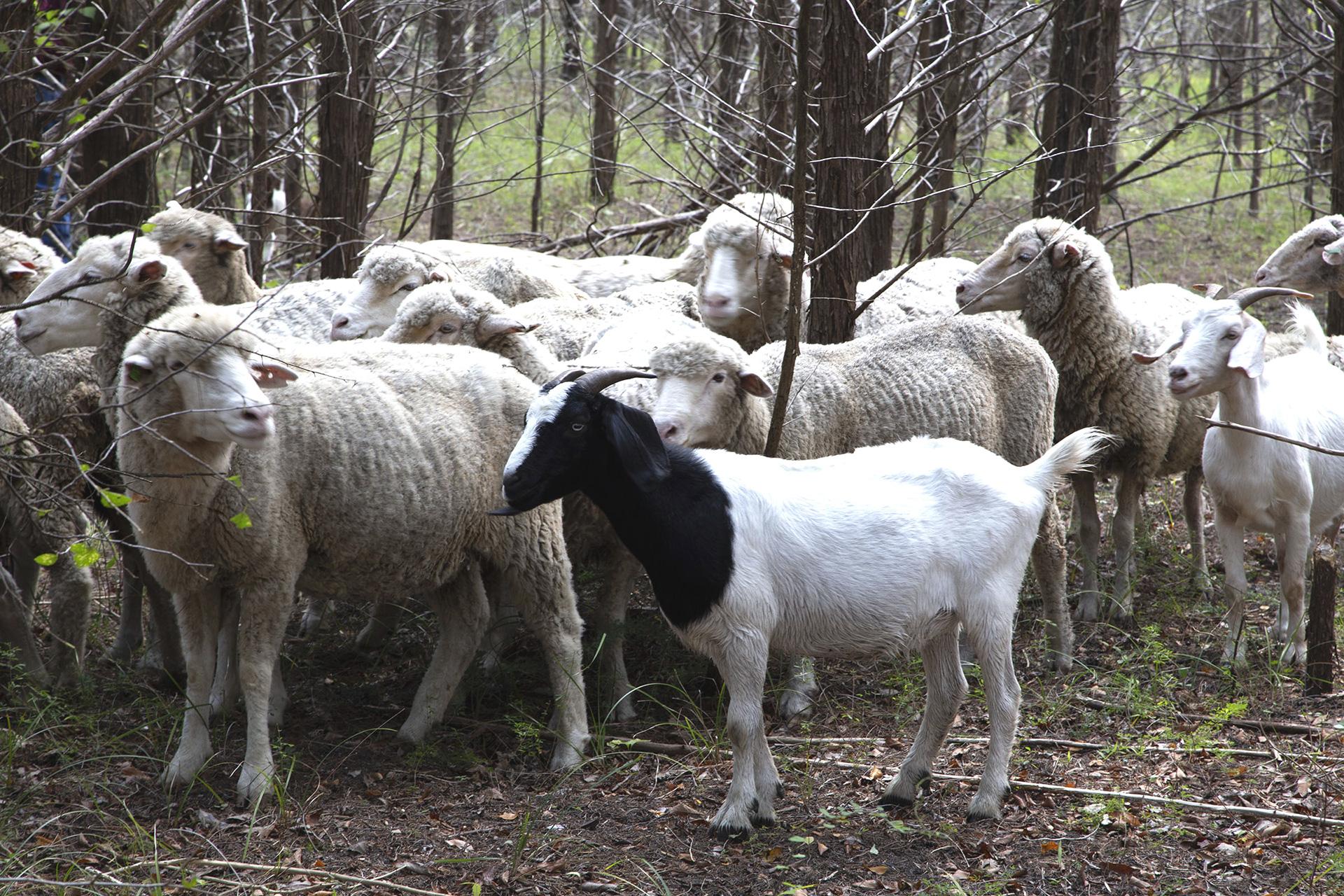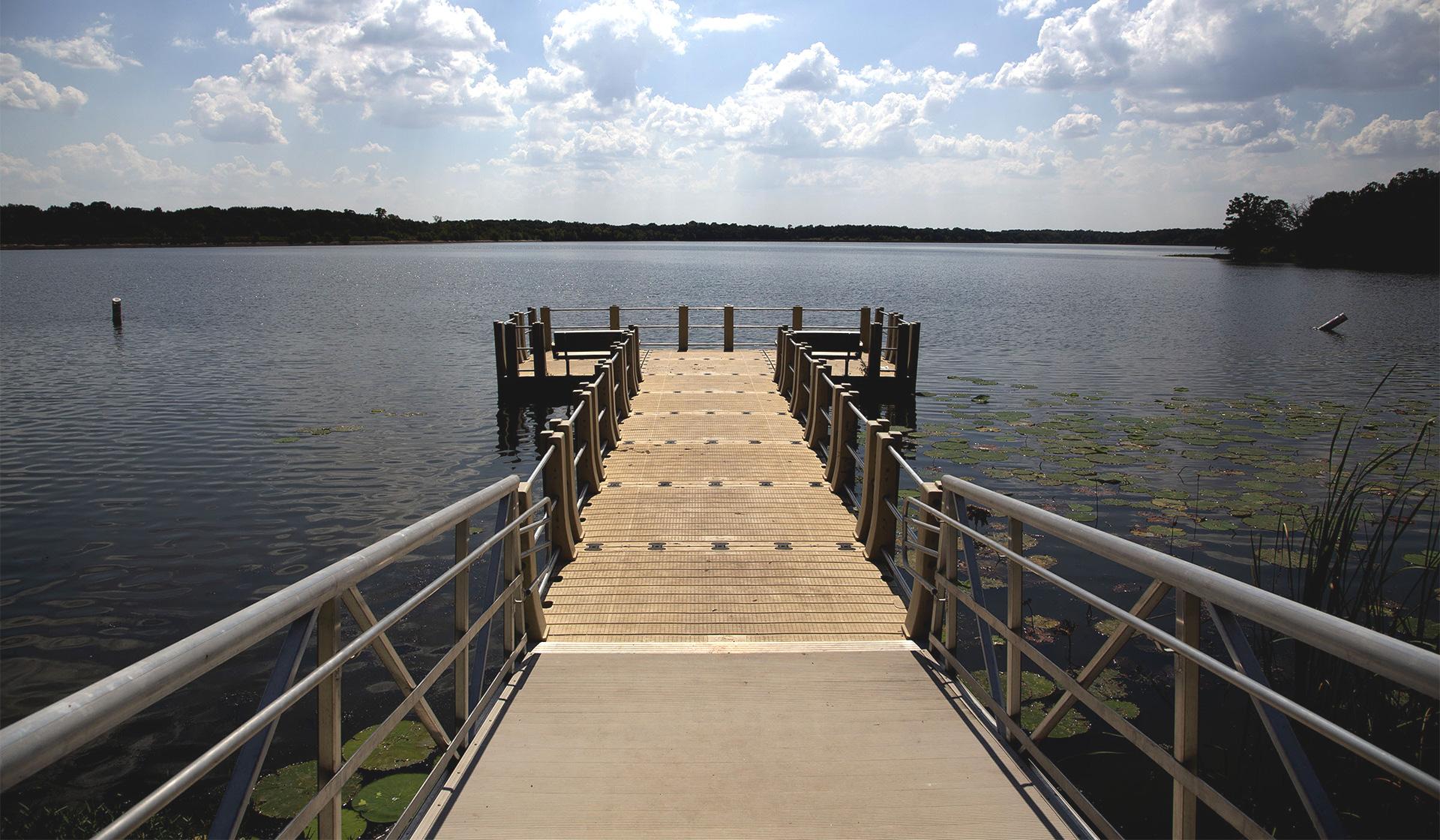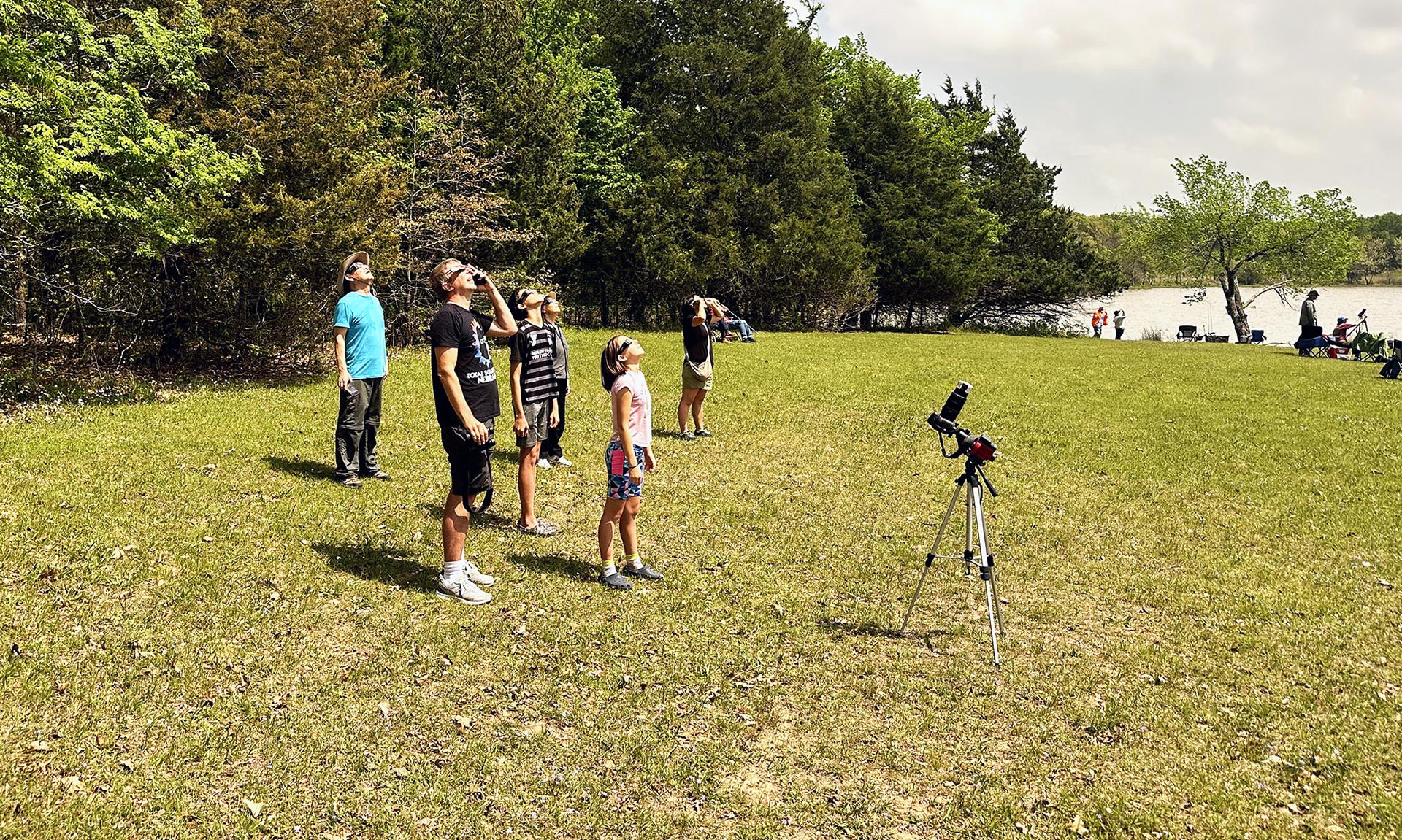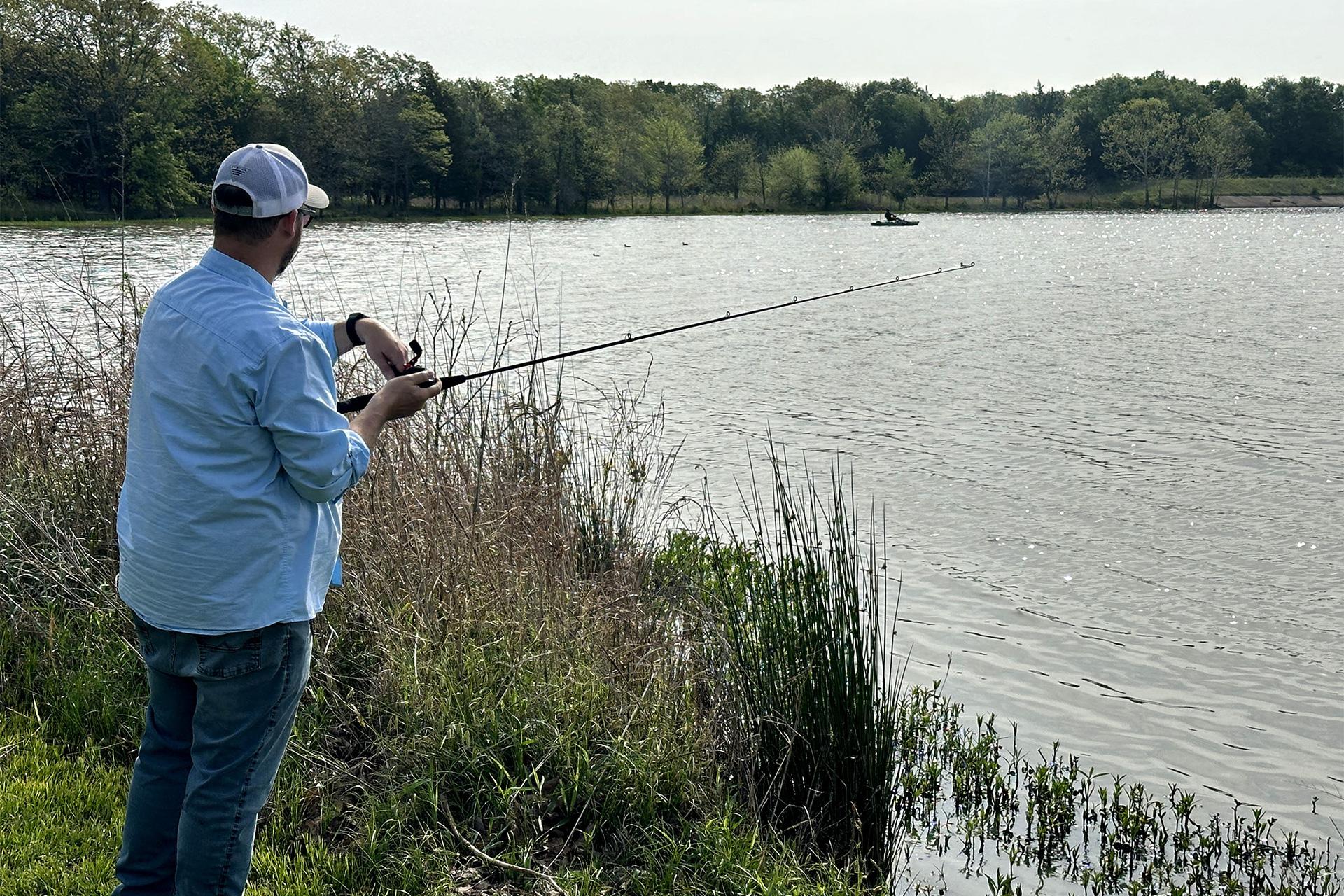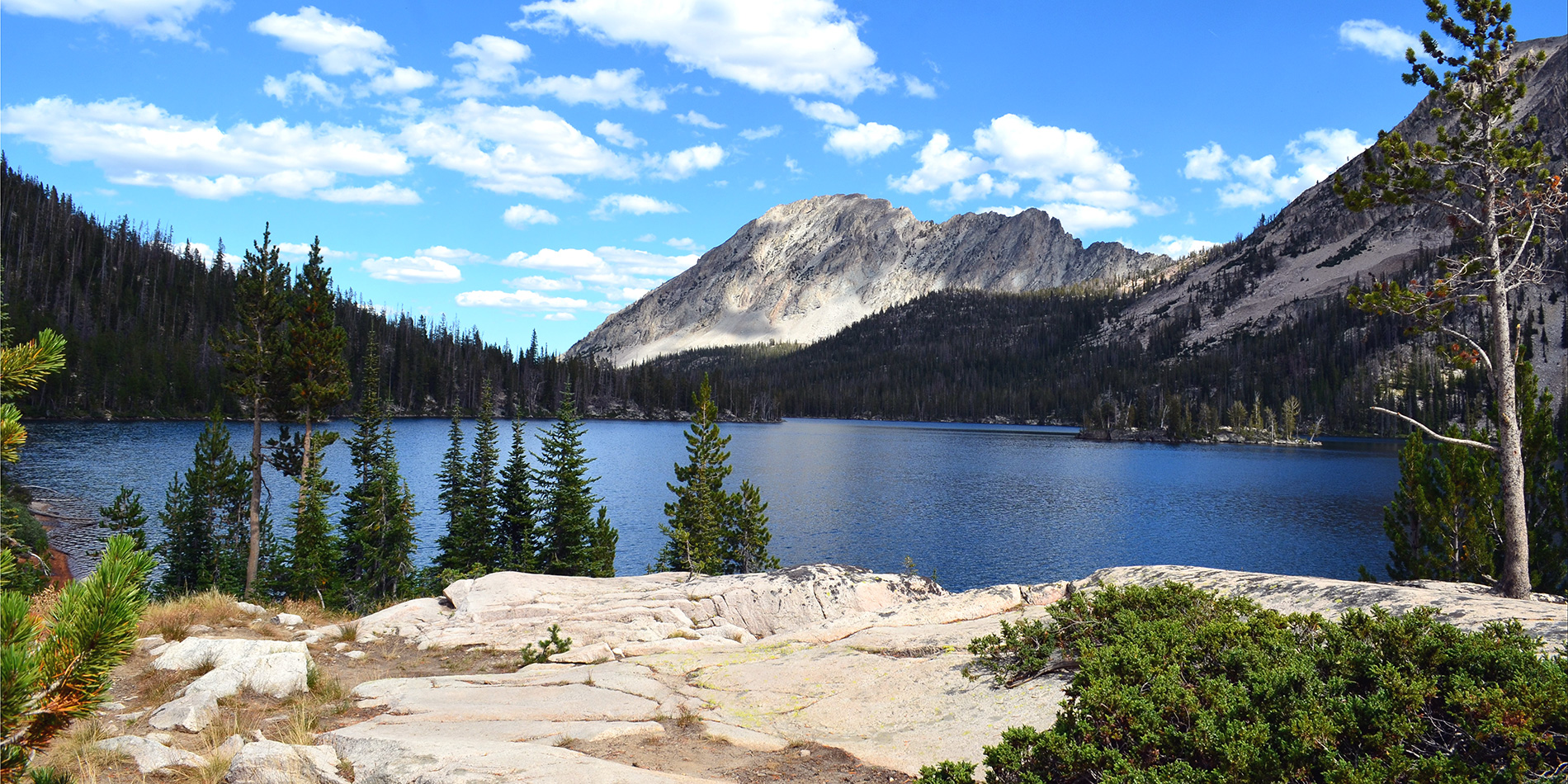A gentle sea of green stretches out in front of you, framed and occasionally broken by individual trees. A far cry from the usual view you might expect when visiting a national forest, where a dense canopy of towering trees would envelope you. But here, on the plains of North Texas outside of Dallas, you’re not in a national forest, but rather a national grassland.
The Caddo and Lyndon B. Johnson National Grasslands combined cover just under 40,000 acres of protected land bracketing the Dallas-Fort Worth Metroplex. Featuring both recreational opportunities and hosting ranching and mineral extraction, the two grasslands are integral parts of the North Texas region.
The Caddo and LBJ National Grasslands include ancestral homelands of several Tribes until they were displaced by settlers and forced north into Oklahoma. They include the Caddo Nation of Oklahoma, the Choctaw Nation of Oklahoma, the Jena Band of Choctaw Indians, and the Muscogee (Creek) Nation on the Caddo National Grassland and Jena Band of Choctaw Indians, Absentee-Shawnee Tribe and Comanche Nation, Oklahoma on the LBJ National Grassland.
These Tribal Nations maintain interest in these grasslands and the USDA Forest Service helps honor its Trust responsibilities to ensure the Tribes are able to access the lands appropriately. Recent cooperation includes enabling the Wichita and Affiliated Tribes to collect cattails for constructing an arbor and reserving cedars for the Caddo Nation of Oklahoma.
Born from Dust
Like most of the other national grasslands, the Caddo and LBJ National Grasslands were born from the wreckage of the Dust Bowl of the 1930s. Historic droughts and years of poor farming practices combined to create the conditions for catastrophic dust storms to sweep the Great Plains for years on end, scouring the top soil and ruining both agriculture and ecosystems throughout the region.
“It’s amazing what had happened here during the Dust Bowl,” said Greg Deimel, natural resources and planning team lead for the Caddo and LBJ National Grasslands. “The dust storms just wiped everything out.”
Seeking to repair the damage, Congress authorized the creation of a series of protected areas that were meant to allow the damaged soils to recover and the natural prairie to rebuild itself. These became the genesis of the national grasslands managed by the USDA Forest Service.
The Forest Service currently administers 20 national grasslands consisting of 3.8 million acres of public land. These grasslands are managed for a variety of purposes including forage, fish and wildlife, timber, water and recreation resources.
Today, the national grasslands’ mission of conserving the prairie lands and managing them for the nation’s use and enjoyment remains as critical as ever. As the climate warms, droughts and other unpredictable weather patterns will strain the ecosystems’ ability to preserve the topsoil, prevent erosion and remain healthy and productive. This in turn affects those, like ranchers, who rely on the national grasslands for their livelihood.
The goal of the national grasslands is to help make sure the suffering of the Dust Bowl does not happen again. To that end, they are managed to facilitate the various uses that people have for the grassland—from ranching to hunting to hiking to even boating—with the goal of making sure that not only can many people enjoy themselves on the land, but also that the land will remain healthy enough to host people long into the future.
Many Things to Many People
National grasslands, like national forests, are many things to many people.
“We’re a multiple use unit,” explains Jeff Stoney, district ranger for the Caddo and LBJ National Grasslands. “That means we provide a great number of uses from our public lands in North Texas.”
To that end, the grasslands play host to a variety of activities.
“We have oil and gas facilities, public land grazing and facilitate a variety of special use requests,” Stoney noted.
The grasslands are also the perfect illustration of the importance of partnerships. The land that makes up the national grasslands is often interspersed with private land holdings, so management decisions must be made with that in mind. Frequently, activities popular in the grasslands crosses over into private lands, so maintaining good relations with the neighbors is essential.
“We’ve got trails and roads that go from our own lands onto private lands held by our neighbors, and a lot of the volunteer organizations that help us with programs and maintenance are even made up of those neighbors,” Deimel said.
Recreation Hub of the North Texas Prairie
Both national grasslands also have extensive recreation opportunities available, from multiuse trails for hiking, running and horseback riding, to lakes and streams for boating, fishing and other aquatic activities. Camping is also available in many locations within the grasslands.
“Caddo and LBJ are special, because they’re so close to the big cities,” observed Deimel. “In about an hour, you’ve gone from the concrete jungle to the old savannah and the quiet lakes of the North Texas prairies.”
Stoney agrees.
“We have some tremendous vistas where a person can either drive or hike to that will allow them to experience fantastic views of the surrounding areas,” he said. “I greatly enjoy the variety of public that seek us out for recreational purposes and to seek solitude.”
It’s this quiet respite that Deimel and many others enjoy most in the grasslands. Whether you hike along the tranquil wooded paths of Caddo National Grassland, picnic amongst the spring wildflowers in the LBJ National Grassland, or enjoy the unfettered night sky in either grassland, if you want a nice quiet spot in nature, you can find it here.
But the grasslands play host to more active recreation as well. Horseback riding is a popular pastime on the Caddo and LBJ National Grasslands, and recently, they played host to some of the millions of people who traveled to behold the total solar eclipse.
It’s not just humans on the grasslands either. White-tailed deer, small mammals, coyotes, bobcats, red fox, waterfowl, bobwhite quail, turkey and songbirds thrive in the diverse habitats provided by the grasslands.
“I find myself partial to the fishing on Caddo National Grassland,” said Deimel. Largemouth bass, blue and channel catfish and various sunfish species are common catches at the many lakes that dot the grasslands' landscape.
“We are a destination source that people seek out in North Texas,” said Stoney. “Here, in a place that is roughly 98% privately owned, people can come to public lands open to all and enjoy a variety of recreational opportunities.”

